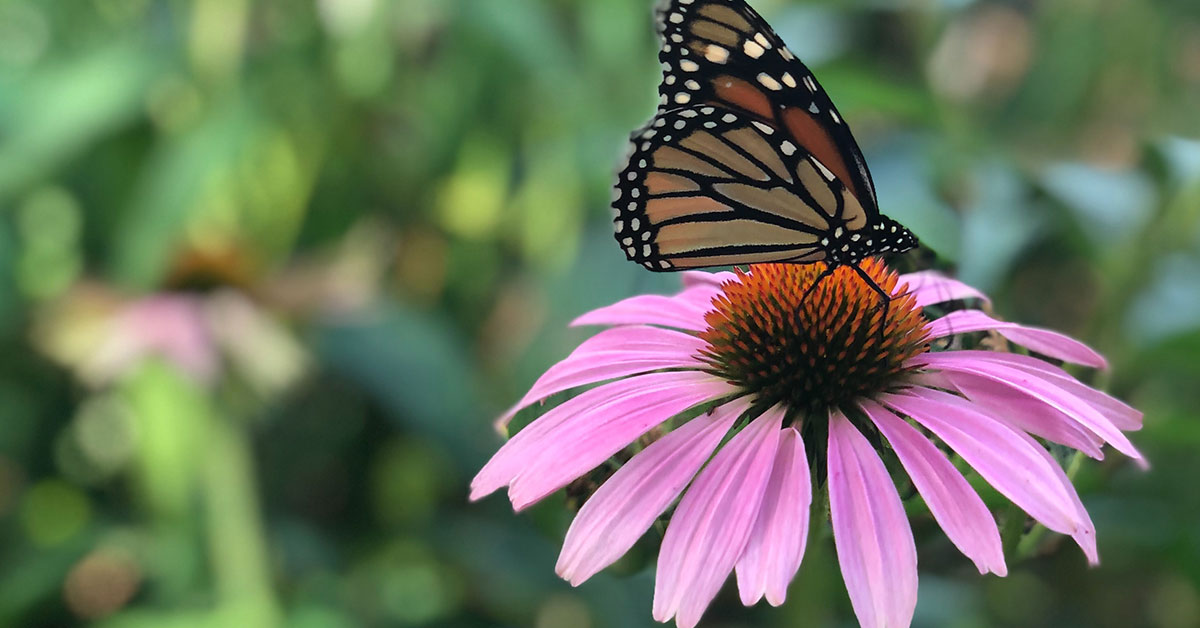Sedum Kamtschaticum, commonly known as Russian Stonecrop, is a perennial evergreen succulent that is native to Northern China and along the Siberian Coast. This hardy ground cover has fleshy, typically dark, spoon-shaped leaves that turn a lovely bronze in winter. Some variations in foliage color include green, purple, blue, yellow, or even variegated with multiple colors. Sedum Kamtschaticum blooms star-shaped yellow flowers in summer that last until winter’s end. Their flowers have a sweet, fruity scent.
What is Sedum Kamtschaticum?
Sedum Kamtschaticum is a stone crop meaning that it can thrive in rocky soil. They require very little soil or water to flourish. This makes them a perfect plant for most homes and gardens regardless of experience. Flowering perennials are my favorite as they provide a great low-effort way to fill my garden.
- Scientific name: Sedum Kamtschaticum
- Other names: Russian Stonecrop, Orange Stone Crop
- Native to: Northern China
- Invasiveness: Non-invasive
- Tenderness: Yes
- Sun: Full sun to partial shade
- Water: Watered once they dry out, drought tolerant
- Soil: Well-draining poor soil, clay soil, and sandy soil. PH should be slightly alkaline to neutral and can handle environmental salt
- Hardiness zone: 4-7
- When to plant: Spring
- Spacing: 1 to 2 feet apart
- Plant height: 6-8 inches
- Bloom period: July through late fall
- Time to maturity: Three months
- Container friendly: Yes, does very well in containers
- Fertilizer: Not required, can benefit from
- Toxicity: Non-toxic, consuming large quantities can cause stomach aches
- Drought tolerant: Yes
- Deer resistant: Yes
- Pest resistant: Yes but keep an eye out for spider mites and mealy bugs
Sedum Kamtschaticum is an easy-to-care-for succulent that is tolerant of a wide range of temperatures, climates, and soil conditions. It grows best in full sun to partial shade and requires very little water. To get started, plant your Sedum Kamtschaticum in well-draining soil in a container or on the ground. Space plants 4-6 inches apart, and keep the soil moist, but not wet. You can also propagate Sedum Kamtschaticum from cuttings, which is a great way to create more plants. Fertilizer is not required for this plant, and it is also deer and pest resistant. This plant is also drought tolerant, so water only when the soil is dry. In the fall, cut back the foliage to prevent the overwintering of pests. In late summer, the plant will bloom with small yellow flowers.
When To Start Sedum Kamtschaticum seeds
Sedum Kamtschaticum seeds should be started in the spring. Sow your seeds indoors about 8-10 weeks before the last frost. Using a sterile starter mix in a small container gently press them into the soil, not truly covering them. The seeds require light to germinate properly. Keep soil moist not soaking, and make sure your containers have appropriate drainage holes. In 2 weeks to 1 month, your seedlings will be ready to transplant outside or to a more suitable container. If you are planting your seedling outdoors be completely sure that all risk of frost has passed.
How to Propagate Sedum Kamtschaticum
Sedum Kamtschaticum can be easily propagated from stem cuttings and root division. Both methods should involve the parent plant being healthy and mature. The best time to take cuttings is in the spring and summer. To take a stem cutting dig down enough o reveal the top of the roots. Look for nodes that are attached to the parent’s base. These are Sedum Kamtschaticum pups and can be removed with a sharp, sterile pair of scissors. Make your cut as close to the base of the parent plant as you can. Plant your pup in a 6-inch and fill it with soil, covering the node. Water thoroughly and place it in a similar location as its parent.
The division is a popular method of propagating Sedum Kamtschaticum. Wait till the end of the parent’s plant’s first year to divide it and don’t divide a plant more than once every 2 to 3 years. To start allow the soil to completely dry out. Dig your plant up and remove the debris. Take a pair of sharp, sterile scissors and cut the base of the plant in half or thirds. Make sure that each segment has roots. Place each of the divisions into a separate container or separate them in the garden with 1 to 2 feet. Once in the ground, the roots should be covered with at least an inch of soil. Water thoroughly.
When To Plant
Sedum Kamtschaticum is best planted in the spring when the last frost has passed. Plant in well-draining soil in a container or the ground spaced 1 to 2 feet apart. Make sure the soil is moist, but not wet. This plant is also drought tolerant, so water only when the soil is dry. In the fall, cut back the foliage to prevent the overwintering of pests. In late summer, the plant will bloom with small yellow flowers.
Wildlife Attracted by Sedum Kamtschaticum
Sedum Kamtschaticum is a great plant for attracting wildlife to your garden. Bees and butterflies are attracted to the small yellow flowers that bloom in late summer. The succulent leaves provide food and shelter for birds and small mammals. The plants are also drought tolerant, making them attractive to animals that need reliable sources of water. Adding Sedum Kamtschaticum to your garden is a great way to create a wildlife-friendly habitat.
Common Problems
Pests can cause Sedum Kamtschaticums problems but they aren’t specifically drawn to it. Inspect your pant often for aphids, spider mites, and white butterflies. If there are only a few just pick them off but if the problem multiplies Sedum Kamtschaticumcan handle succulent pesticides. Disease and root rot are more likely to occur. Root rot occurs from over-watering or when the roots are in standing water. It’s a very easy fix. First, make sure that you are watering thoroughly and waiting for the soil to dry before watering again. Make sure that you have the appropriate soil and that you are not letting water sit in the overflow tray.













